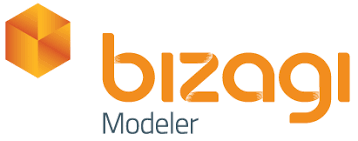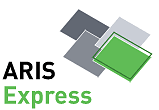Process mapping software provides a digital platform for organisations to visualise, analyse, and optimise their workflows with ease and efficiency. As a Lean Six Sigma and process improvement consultant and mentor, it is crucial to be familiar with the right software tools to enhance process mapping capabilities. In this blog post, we will explore the top 6 process mapping software tools that process improvement consultants should consider and delve in to each of their pros and cons. From user-friendly interfaces to advanced features, these tools will help you to streamline processes and drive impactful improvements.


Microsoft Visio is a popular diagramming and process mapping software that provides a comprehensive set of tools for visualising processes. With its extensive library of pre-built shapes and templates, Visio enables users to create professional-looking process maps quickly. It offers various diagram types, including flowcharts, swim lane diagrams, and BPMN, catering to different process mapping needs. Integration with other Microsoft Office applications makes data import and export seamless.

Lucidchart is a versatile cloud-based diagramming software that offers a wide range of features for process mapping. With its intuitive drag-and-drop interface, users can create flowcharts, swimlane diagrams, and other process maps with ease. Lucidchart also allows real-time collaboration, making it an ideal choice for teams working on process improvement projects. Integration with other popular tools like Google Workspace and Microsoft Office enhances its versatility and usability.

draw.io is a versatile and user-friendly process mapping software that provides a comprehensive set of features for creating diagrams, including process maps. With its intuitive drag-and-drop interface, users can easily design and customize process flows, flowcharts, and swimlane diagrams. draw.io offers a wide range of shapes and symbols to represent different process elements, allowing for clear and visually appealing process maps.

IBM Blueworks Live is a powerful process mapping tool that offers a collaborative environment for process improvement initiatives. It provides an intuitive interface to create process maps using BPMN notation, allowing users to document processes, capture business rules, and define process interactions. Blueworks Live also offers features for process analysis, simulation, and version control, enabling continuous improvement and collaboration within teams.

Bizagi Modeler is a user-friendly process mapping software that combines simplicity with powerful capabilities. It allows users to create process maps using BPMN notation and offers a drag-and-drop interface for easy diagram creation. Bizagi Modeler also supports process documentation, analysis, and collaboration, making it suitable for both individual use and team projects. The software offers integration with other Bizagi products for end-to-end process management.

ARIS Express is a free and easy-to-use process modelling and analysis software from Software AG. It provides a range of tools for creating process maps using BPMN notation and offers features for process analysis, simulation, and collaboration. ARIS Express enables users to design and optimise processes, identify bottlenecks, and improve process efficiency. The software's user-friendly interface and extensive documentation make it suitable for beginners in process mapping.
Process mapping software tools play a vital role in visualizing and optimizing workflows for process improvement. Whether you choose Microsoft Visio, Lucidchart, draw.io, IBM Blueworks Live, Bizagi Modeler or ARIS Express, each software tool offers unique features and benefits to support your process mapping needs. Consider the user interface, collaboration capabilities, advanced features, pricing, and integration options when selecting the right tool for your organization. By leveraging the power of process mapping software, you can streamline your processes and drive continuous improvement to achieve remarkable results in Lean Six Sigma and process improvement initiatives.
Find out if MentorCruise is a good fit for you – fast, free, and no pressure.
Tell us about your goals
See how mentorship compares to other options
Preview your first month
